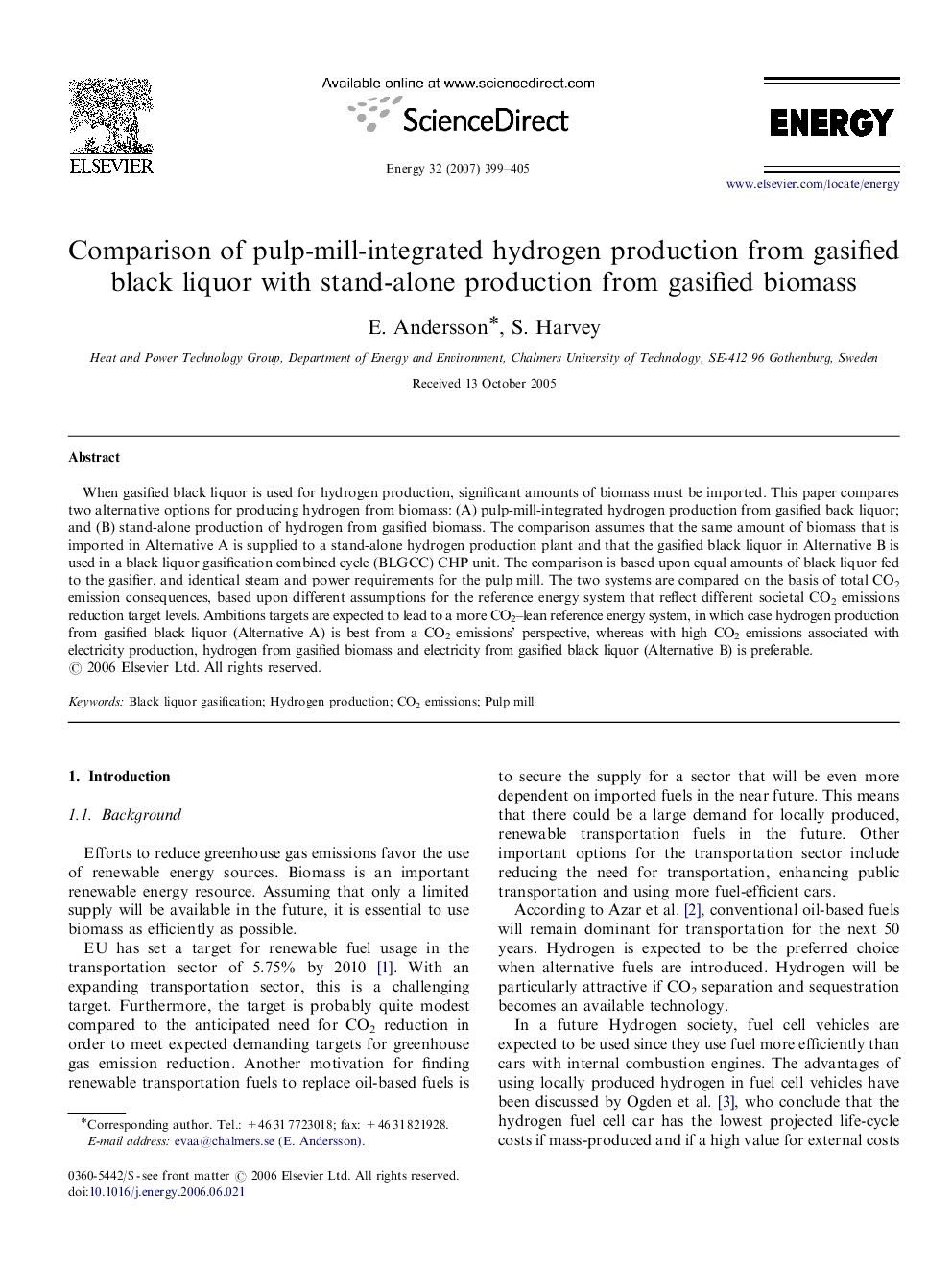| Article ID | Journal | Published Year | Pages | File Type |
|---|---|---|---|---|
| 1736054 | Energy | 2007 | 7 Pages |
When gasified black liquor is used for hydrogen production, significant amounts of biomass must be imported. This paper compares two alternative options for producing hydrogen from biomass: (A) pulp-mill-integrated hydrogen production from gasified back liquor; and (B) stand-alone production of hydrogen from gasified biomass. The comparison assumes that the same amount of biomass that is imported in Alternative A is supplied to a stand-alone hydrogen production plant and that the gasified black liquor in Alternative B is used in a black liquor gasification combined cycle (BLGCC) CHP unit. The comparison is based upon equal amounts of black liquor fed to the gasifier, and identical steam and power requirements for the pulp mill. The two systems are compared on the basis of total CO2 emission consequences, based upon different assumptions for the reference energy system that reflect different societal CO2 emissions reduction target levels. Ambitions targets are expected to lead to a more CO2–lean reference energy system, in which case hydrogen production from gasified black liquor (Alternative A) is best from a CO2 emissions’ perspective, whereas with high CO2 emissions associated with electricity production, hydrogen from gasified biomass and electricity from gasified black liquor (Alternative B) is preferable.
